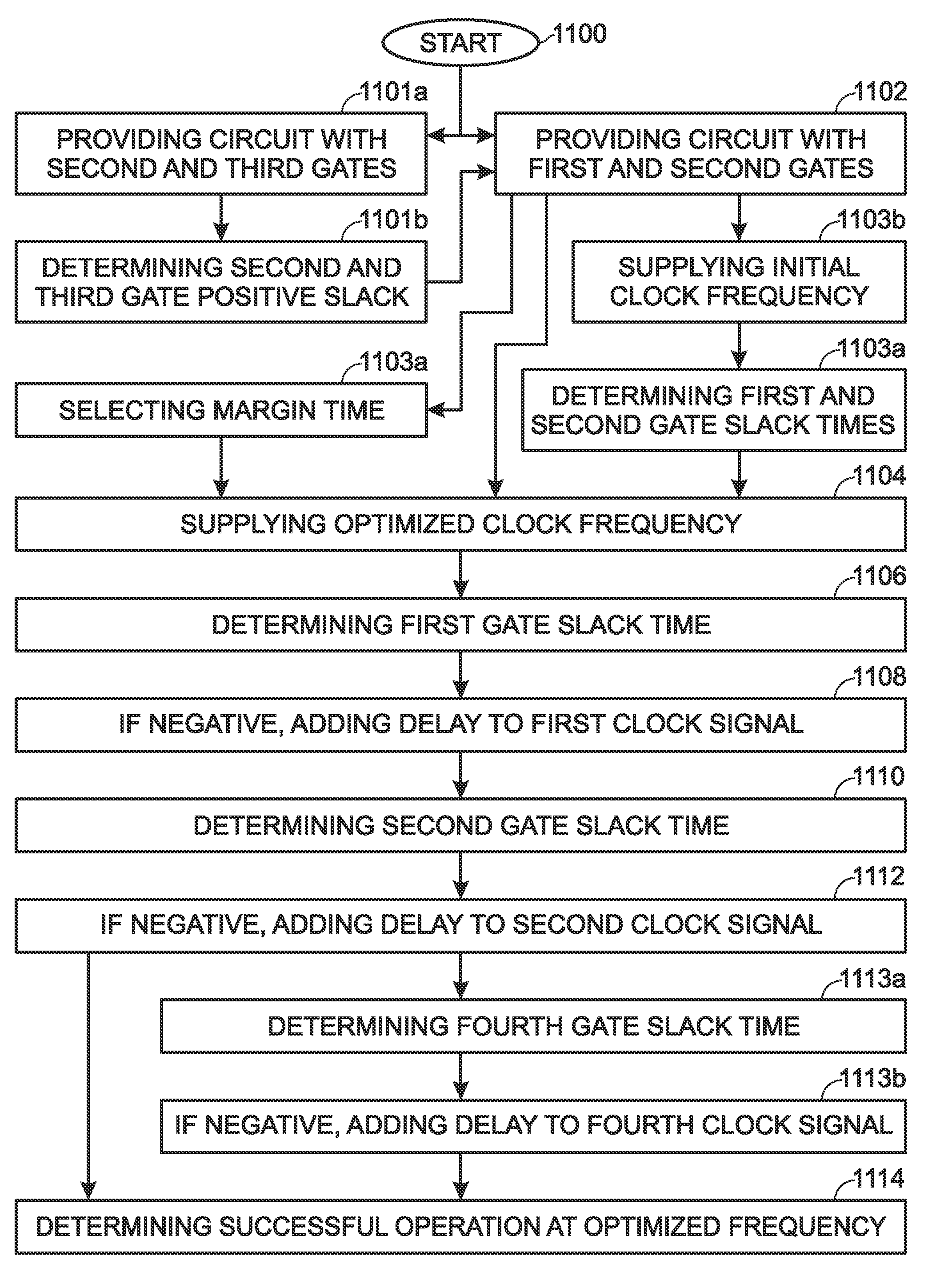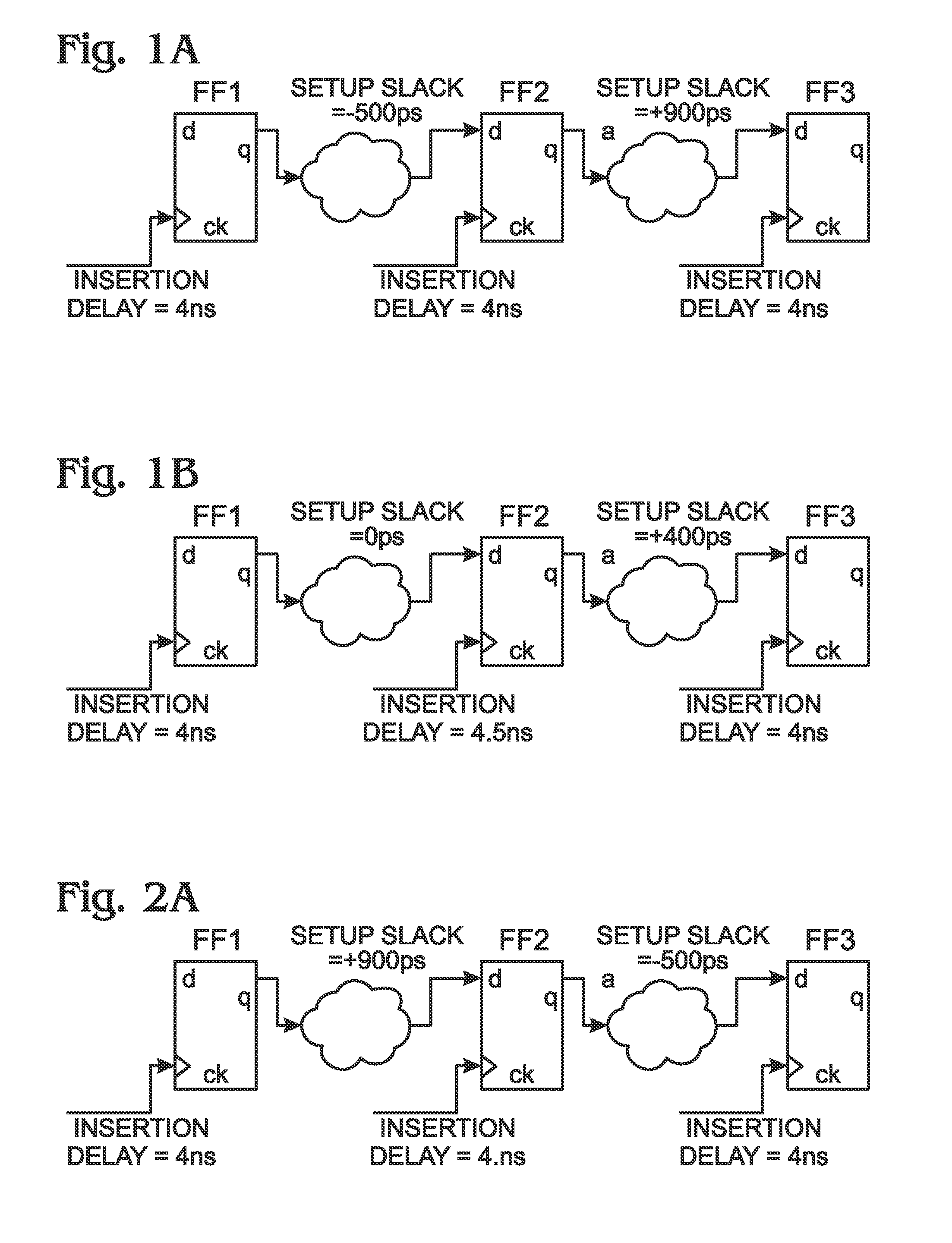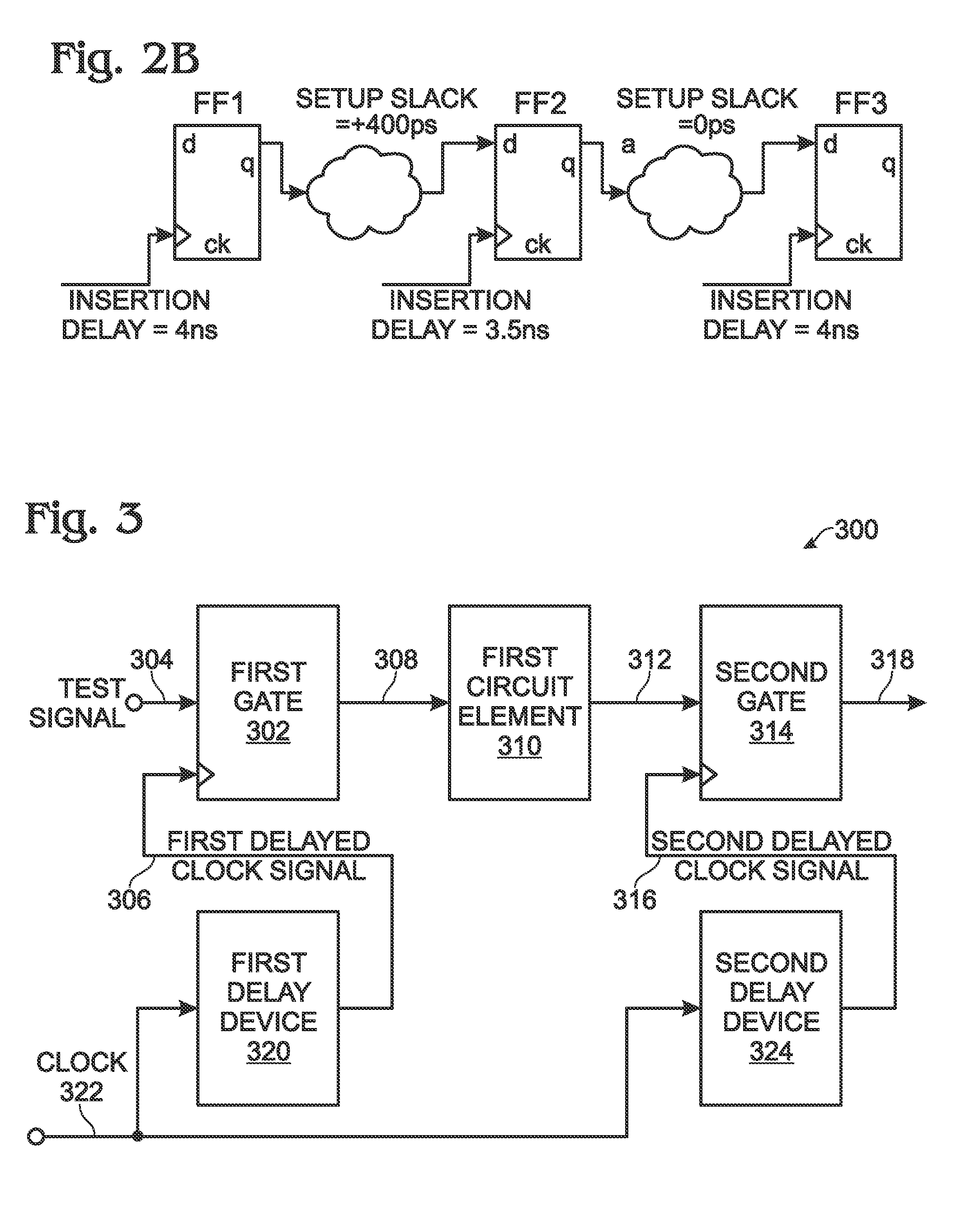Frequency optimization using useful skew timing
- Summary
- Abstract
- Description
- Claims
- Application Information
AI Technical Summary
Benefits of technology
Problems solved by technology
Method used
Image
Examples
Embodiment Construction
[0027]FIGS. 1A and 2B depict a delaying capture clock. Useful skew is sometime used by designers to close the timing in a system-on-chip (SoC). In this concept, the launch clock is advanced, or the capture clock is delayed, to meet the setup requirement of the design. As shown in FIG. 1A, the flop FF2 is violating setup slack by 500 picoseconds (ps) (shown as −500 ps) while the next stage flop FF3 is meeting the setup slack by 900 ps (shown as +900 ps). Since 900 ps is greater than 500 ps, the clock of flop FF2 can be delayed by 500 ps to meet the setup slack, as shown in FIG. 1B. This is called a delaying capture clock.
[0028]FIGS. 2A and 2B depict an advancing launch clock. As shown in FIG. 2A, FF3 is violating setup slack by −500 ps. However, the clock of flop FF2 can be advanced to meet the setup slack, as shown in FIG. 2B.
[0029]However, if positive slack (more than the absolute value of the negative slack) is not available in the preceding or the next stage of flops (e.g., 900 p...
PUM
 Login to View More
Login to View More Abstract
Description
Claims
Application Information
 Login to View More
Login to View More - R&D
- Intellectual Property
- Life Sciences
- Materials
- Tech Scout
- Unparalleled Data Quality
- Higher Quality Content
- 60% Fewer Hallucinations
Browse by: Latest US Patents, China's latest patents, Technical Efficacy Thesaurus, Application Domain, Technology Topic, Popular Technical Reports.
© 2025 PatSnap. All rights reserved.Legal|Privacy policy|Modern Slavery Act Transparency Statement|Sitemap|About US| Contact US: help@patsnap.com



